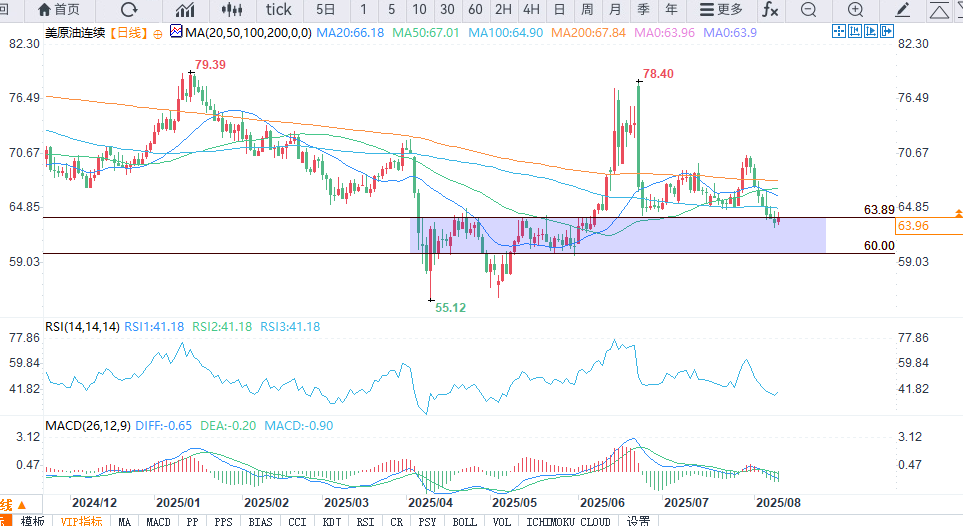Crude oil prices stabilize ahead of US-Russia talks, as supply increases and geopolitical expectations intertwine
2025-08-12 02:16:07

Trump said on Friday he would meet with Putin to discuss a possible end to the Russia-Ukraine conflict after the United States tightened sanctions on Russia, threatening secondary sanctions on Russian oil buyers and imposing a 25% tariff on India for buying discounted Russian oil.
A breakthrough in the Alaska talks could ease geopolitical risk premiums and prompt a realignment of global oil flows. If the talks fail, the market could face renewed volatility due to supply disruption risks and heightened geopolitical tensions.
This week, the market also looks forward to monthly reports from the U.S. Energy Information Administration (EIA), OPEC+ and the International Energy Agency (IEA) for insights into supply and demand trends.
UBS lowers crude oil price outlook
UBS Group AG is cautious on the crude oil market, predicting Brent crude prices will fall to $62 by the end of 2025 and March 2026, and recover to $65 by mid-2026. The bank also narrowed WTI's discount to Brent from $4 to $3.
UBS strategist Giovanni Staunovo said rising production in Brazil and Guyana, stable supply from Iran, Venezuela and Russia, and weaker-than-expected demand in India were the main reasons for the downward revision.
OPEC+ production increases limited
A Reuters survey on Friday showed that despite the OPEC+ agreement to increase production, oil production growth in July was limited by production cuts in Iraq and drone attacks on Kurdish oil fields. UBS expects OPEC+ to hold off on further production increases unless there are major supply disruptions.
Market dynamics and technical analysis

(WTI crude oil daily chart source: Yihuitong)
"The recent sell-off in oil prices has paused for now as the market awaits the high-stakes talks on Friday," said StoneX analyst Alex Hodes.
Phil Flynn, senior analyst at Price Futures Group, added: "The smaller-than-expected OPEC+ production increase and the potential for a ceasefire in Ukraine to free up Russian oil are causing oil prices to yo-yo."
Technically, WTI crude oil is attempting to recover from last week's heavy losses, but faces a critical level, Friday's high of $63.89, which overlaps with a key support-turned-resistance area. A breakout would raise resistance to the 100-day moving average at $64.48 and the 50-day moving average at $66.42. Initial support lies below the intraday low of $62.36, while short-term support lies at $61.50. A break below this level could potentially trigger psychological and structural support at $60.00.
The Relative Strength Index (RSI) is at 41, showing a slight recovery but remaining in the lower end of neutral territory, suggesting weakening bearish momentum but requiring stronger buying support for bulls. The MACD indicator remains in negative territory, despite a flattening histogram, suggesting that selling pressure may be stabilizing. Further buying could signal a reversal.
At 02:14 Beijing time, WTI crude oil was quoted at US$64.12 per barrel, up 0.38%.
- Risk Warning and Disclaimer
- The market involves risk, and trading may not be suitable for all investors. This article is for reference only and does not constitute personal investment advice, nor does it take into account certain users’ specific investment objectives, financial situation, or other needs. Any investment decisions made based on this information are at your own risk.





















